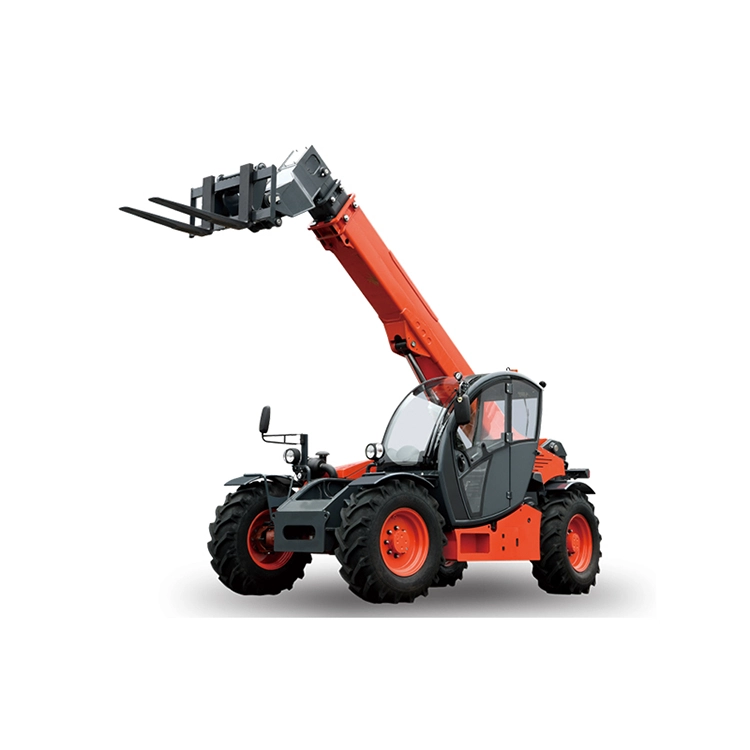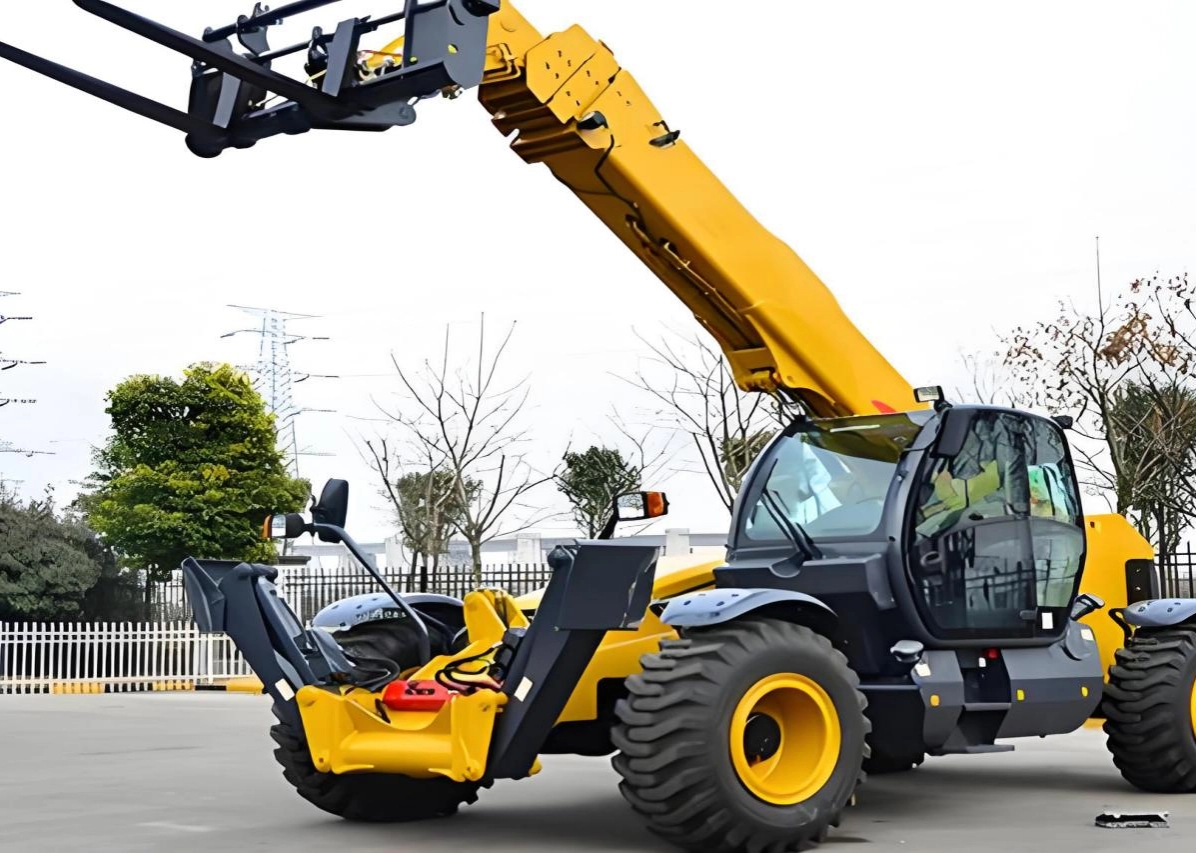Telehandlers Boost Efficiency in BRI’s New High-Speed Rail Construction Sites
Industry News
2025/04/10
The Belt and Road Initiative (BRI) has reshaped worldwide infrastructure growth, linking countries through bold endeavors like high-speed rail construction. As nations such as Pakistan and Kenya adopt these groundbreaking rail systems, the need for effective material handling solutions has soared. Here come telehandlers—adaptable, robust machines that are transforming construction zones along BRI pathways. This blog examines how telehandlers improve productivity in high-speed rail projects. It tackles the distinct material handling demands of BRI countries and provides valuable tips for construction experts aiming to enhance their workflows.
The Belt and Road Initiative: A Catalyst for High-Speed Rail Growth
Initiated by China in 2013, the Belt and Road Initiative seeks to strengthen trade and linkage across Asia, Africa, and Europe via an extensive web of infrastructure developments. High-speed rail construction stands as a vital pillar of this plan. It offers quicker transit, economic progress, and regional unity. Projects stretch from the China-Pakistan Economic Corridor (CPEC) to Kenya’s Standard Gauge Railway (SGR). These efforts demand advanced tools to meet strict timelines and tough landscapes.
Telehandlers, with their extendable arms and versatile functions, have become essential assets in this setting. They simplify material movement, cut idle time, and adjust to the varied landscapes of BRI nations. Thus, they prove an ideal match for high-speed rail construction.
Why Material Handling Matters in High-Speed Rail Projects
High-speed rail construction requires shifting hefty items—metal beams, cement panels, and rail lines—across vast and often tricky locations. Smooth material handling is crucial to:
Reduce Delays: Prompt delivery of supplies keeps tasks on track.
Promote Safety: Careful handling lowers dangers to workers and gear.
Cut Expenses: Swift actions decrease labor and fuel costs.
In BRI countries like Pakistan and Kenya, rail projects span mountains, flatlands, and city areas. Telehandlers deliver the agility and strength required to address these challenges directly.
Telehandlers in Action: Enhancing Efficiency Across BRI Rail Sites
Telehandlers go beyond basic forklifts with longer reach. They blend lifting power, ease of movement, and accuracy. Let’s explore how they elevate productivity in specific BRI high-speed rail projects.
Pakistan: Tackling the China-Pakistan Economic Corridor
The CPEC, a key BRI effort, includes a railway connecting Gwadar Port to Xinjiang, China. This path stretches over 3,000 kilometers. It crosses steep mountains and dry plains, posing distinct logistical hurdles. Telehandlers shine here by:
Hoisting Weighty Loads: Models like the Heli 35H77-116S Rough Terrain Telehandlercan lift up to 3,500 kg. They’re perfect for steel tracks and building units.
Mastering Uneven Ground: All-wheel-drive setups provide steadiness on bumpy surfaces.
Accelerating Work: Their reach, both upward and outward, reduces reliance on extra equipment.
In Pakistan, where deadlines loom large and funds are closely watched, telehandlers slash costs. They merge tasks that would typically need cranes and forklifts.
Kenya: Powering the Standard Gauge Railway
Kenya’s SGR ties Mombasa to Nairobi and further. It’s another BRI success. Although the first stage is done, plans to extend to Uganda and other East African regions call for sustained construction speed. Telehandlers help by:
Managing Varied Items: From cement ties to gravel stones, machines like the Heli 35H46-84 Rough Terrain Telehandlerhandle diverse weights effortlessly.
Operating in Tight Spots: Sleek designs allow use near current tracks or city centers.
Easing Workforce Strain: One telehandler can stand in for several laborers. This boosts output in areas short on workers.
In Kenya, where profits depend on freight movement, telehandlers ensure supplies shift rapidly. They keep the rail system primed for growth.
Key Features of Telehandlers for High-Speed Rail Construction
To grasp why telehandlers transform projects, look at their standout traits suited to BRI rail efforts:
| Trait | Advantage | Importance to BRI Projects |
| Extendable Arm | Stretches up to 18 meters or beyond | Raises items over barriers in rough areas |
| Strong Lifting Power | Manages weights from 3,000 to 16,000 kg | Shifts hefty rail parts smoothly |
| All-Terrain Ability | Works on bumpy or wet ground | Suits varied BRI settings |
| Tool Flexibility | Switches between forks, scoops, and claws | Handles diverse jobs with one unit |
| Slim Build | Moves easily in narrow zones | Fits city or trackside work areas |
These qualities make telehandlers, like the XCMG XC6-3007K Telehandler, vital for meeting the shifting needs of high-speed rail construction.
Overcoming Challenges in BRI Rail Projects with Telehandlers
BRI rail zones encounter obstacles like distant sites, severe weather, and pressing deadlines. Telehandlers tackle these issues by:
Reaching Far-Off Spots: Their portability accesses remote places cranes can’t reach.
Standing Up to Weather: Sturdy designs endure dust, rain, and heat typical in Pakistan and Kenya.
Saving Time: Fast setup and use keep work flowing despite tight schedules.
For project leaders, choosing telehandlers means fewer delays and steadier results. This is key to BRI’s grand ambitions.
MachPlaza: Your Partner in Construction Machinery Excellence
Before we move to FAQs, let’s highlight MachPlaza, a top supplier of construction equipment from China. With deep expertise, MachPlaza offers premium tools like telehandlers, wheel loaders, and diggers to clients globally. Dedicated to creativity and dependability, MachPlaza aids projects in the Belt and Road Initiative. It provides custom solutions for tough building settings. Check out MachPlaza’s homepage to see their full lineup and learn how they can lift your next rail task.
FAQs: Understanding Telehandlers in BRI High-Speed Rail Construction
Here are responses to frequent queries about telehandlers and their role in the Belt and Road Initiative:
Q1. What Are Telehandlers Used for in High-Speed Rail Construction?
A1. Telehandlers raise and shift items like steel tracks, cement panels, and gravel stones. Their extendable arms enable exact placement. This makes them critical for track setup and structural tasks in BRI projects.
Q2. How Do Telehandlers Improve Efficiency in the Belt and Road Initiative?
A2. They merge duties—lifting, shifting, and placing materials. This cuts the need for extra machines, saving time and money. Their fit for rough landscapes ensures steady work across varied BRI sites.
Q3. Are Telehandlers Suitable for Rough Terrains in BRI Nations?
A3. Yes, units built for tough ground have all-wheel drive and solid frames. They’re great for Pakistan’s hilly zones or Kenya’s mixed landscapes in high-speed rail construction.
Q4. What Load Capacity Do Telehandlers Offer for Rail Projects?
A4. Depending on the type, telehandlers manage 3,000 to 16,000 kg. This is ample for heavy rail parts, boosting output on BRI work zones.
Elevate Your BRI Projects with Telehandlers Today
The Belt and Road Initiative is remolding global ties, with high-speed rail construction at its core. Telehandlers stand out as quiet champions. They drive productivity and conquer hurdles in places like Pakistan and Kenya. For construction pros, using these flexible machines is a smart step to lead in the BRI scene.
Ready to lift your project’s success? Browse MachPlaza’s array of telehandlers to find the right match for your high-speed rail goals. Whether it’s the tough Heli 35H77-116S or the adaptable XCMG XC6-3007K, your path to better efficiency begins now. Reach out to MachPlaza today and energize your BRI construction site!


